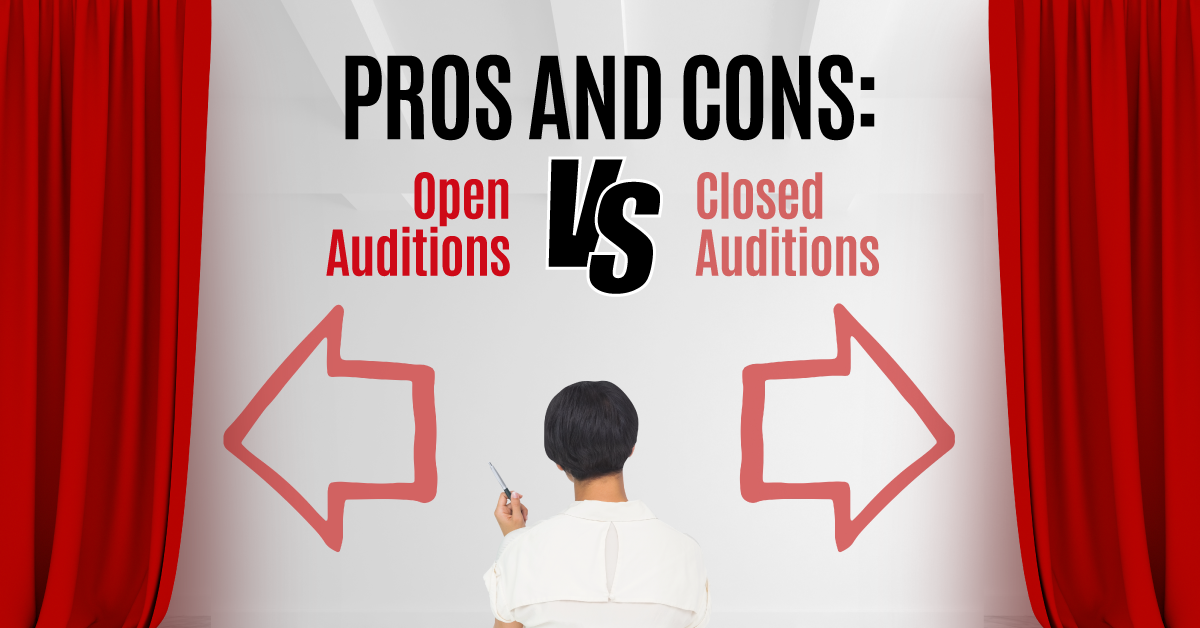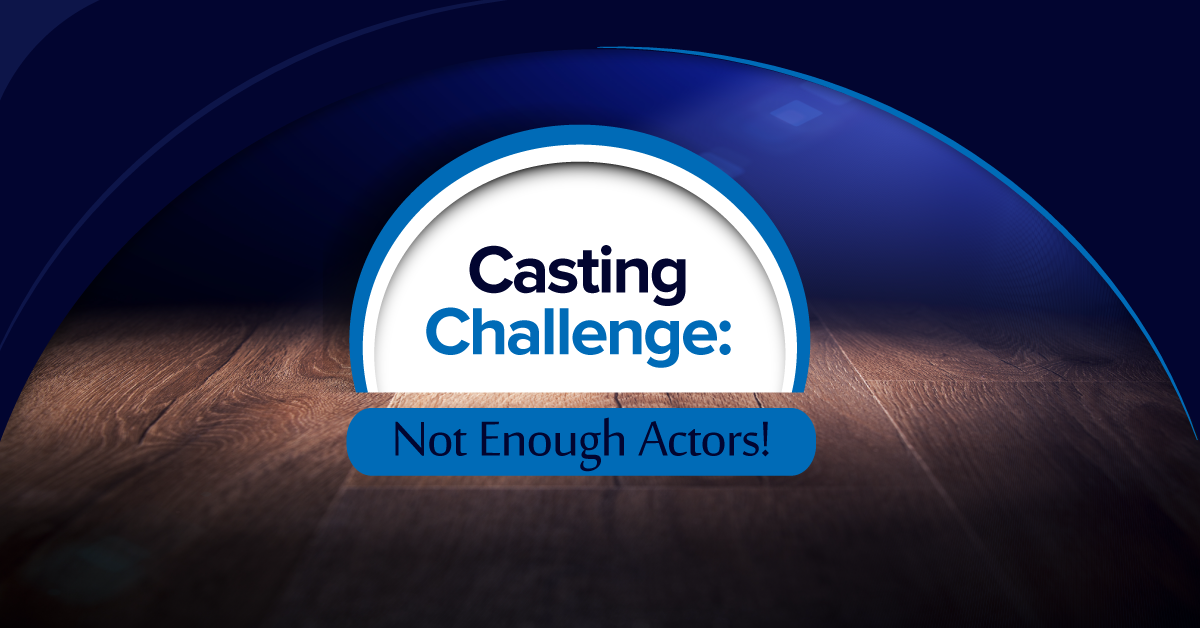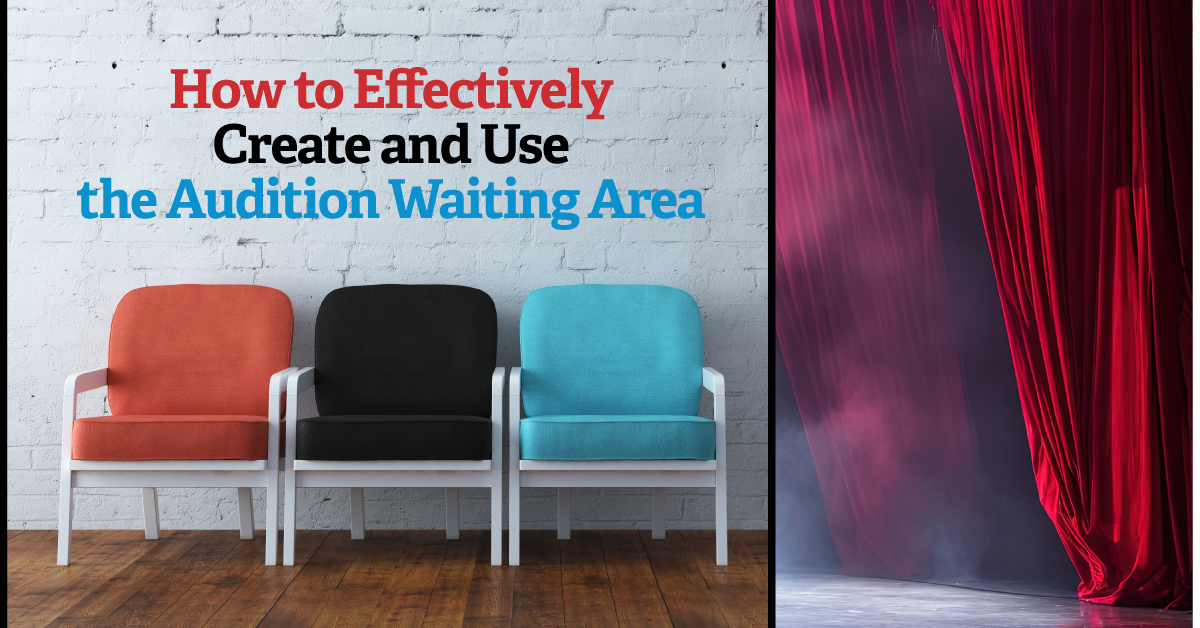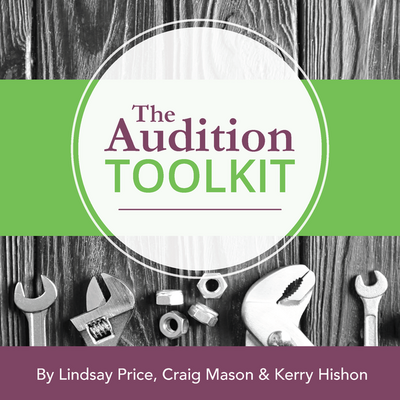Horror Movie 101: Failing Can Be Deadly by Steven Stack is a chilling mix of horror and humor - perfect for student performers and the spooky season! 👻
Pros and Cons: Open Auditions vs. Closed Auditions
There are various methods of having students audition for your upcoming theatrical production. The most common methods are having students present a prepared monologue and/or song or doing cold readings from the script. You also need to consider whether you’ll run open auditions or closed auditions. Open auditions versus closed auditions basically deal with the location of the waiting students. An open audition is where you gather all the students into one room and have each one present their audition in turn, in front of the artistic team and the rest of the students. A closed audition is where each student auditions by themselves in front of the audition panel, while the rest of them wait elsewhere.
The method of auditioning you choose will depend on you, your students, and your available resources. Let’s look at some pros and cons to both methods.
Open Auditions
Open auditions are exactly that: open and transparent. They give students the chance to perform in front of an audience and allow them to demonstrate how they work under pressure. The major pro for open auditions is that everyone is present and can see how everyone else did. Therefore, each student’s choice of audition piece, presentation, and apparent confidence and preparedness are evident. This can sometimes be a slight disadvantage if you decide to cast a different student in a leading role than the one the students perceive as the “best” performer, but ultimately that choice is up to you as the director.
With open auditions, you may choose to have the waiting students sit facing the auditioning student in a typical audience style; or you can have the waiting students sit behind the auditioning student and have the artistic team on the other side, so the auditioning student doesn’t have to see all the other students staring at them. As always, you know your students best, so set up your audition area in the way that best suits your students’ needs.
An advantage of open auditions is that since you have all the interested students present, you can do group work right away, such as group readings from the script, group improvisations, chemistry reads (to see which students work well together), dance auditions, or learning a song from the show.
Another pro of open auditions is that you’ll only need one room to hold auditions in; but a con is that it’ll need to be a big room to accommodate all the students, and you’ll need adequate seating for everyone present, unless you plan on just having them sit on the floor while they wait.
The main con reported by my previous students of open auditions is that they can be extremely nerve-wracking. Students are often terrified of what their peers will think of their audition piece, their performance, and whether they screwed up. They worry that the director will make them perform their audition piece again or take a note that is embarrassing. Despite the fact that students will inevitably be performing in front of an audience, they often feel that their fellow students will judge them or make fun of them ahead of time.
Another con is that unless you have a planned order of auditioning, students may be reluctant to volunteer to go first, even if it means they’ll be done quicker. As well, if you are keeping all the students for the entirety of auditions (which is the most fair), students may have to sit around and wait for a long time for their turn. They might get antsy or start to become chatty or disruptive as time passes. You’ll have to remind students that their behaviour throughout the entirety of the audition (which includes the time spent in the audience) counts towards their casting. Depending on the length of the audition session, you may have to schedule bathroom and/or snack breaks for the group.
Closed Auditions
Closed auditions are simple and intimate. It’s just the student and the artistic staff, so each student receives one-on-one attention. A major pro of closed auditions is that students are generally way less nervous auditioning for just the artistic staff, without the added pressure of auditioning in front of their friends and classmates. If your students are particularly nervous or anxious about presenting their auditions, this method might be your best bet.
In closed auditions, you can make and post/send out a running order schedule for students, and it saves them a lot of time because they only have to attend for the length of time they’re assigned to complete the audition (generally between 5–15 minutes, depending on the time available and the number of students who are auditioning).
Another pro is that it’s much easier to give students comments and feedback right away, and even have students try again and apply the notes (as time permits). Or, you might have them do an additional cold reading from the script. With closed auditions, you don’t necessarily have to have every student do a cold read or present their audition again in a different style; you can tailor each student’s audition to best suit them and their abilities.
With closed auditions, students only know how they themselves did. They can, of course, talk with each other about how they think they did, but they won’t know exactly what happened in everyone else’s audition. That can be advantageous, as you can cast the show any way you please and the only ones who know exactly what went on “in the room where it happens” is the artistic team.
One disadvantage of closed auditions is that you’ll have to schedule an additional day of auditions if you wish to have students do any group work or chemistry reads. You run the risk of a student not being available for the additional day and worrying that this might jeopardize their chances of being cast or getting a good role.
You’ll also need more resources for closed auditions. You’ll need a second location for students to sit in while they’re waiting, with adequate seating for all the students. You’ll also need at least two additional staff members: an audition assistant to supervise students who are in the waiting area, and if you are the solo member of the artistic team, you may wish to have an additional staff member present so you are not alone in a room with a student behind a closed door.
You may wish to poll your students to find out which audition method they prefer and why. Click the giveaway below to download a resource with discussion and reflection questions for you and your students.
Additional Resources:
How Do You Cast School Plays?
Round-Up: Best Casting Advice for Fellow Directors
Pros & Cons of Double Casting
How to Practice Cold Reading
Related Articles
Audition Toolkit
by Lindsay Price, Craig Mason, and Kerry Hishon
Teach students to present their best selves in an audition situation with The Audition Toolkit - complete with articles, exercises, tips and more for both teachers and students.




